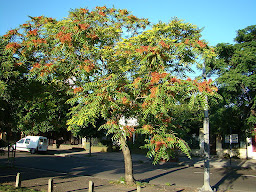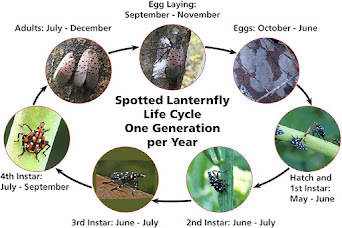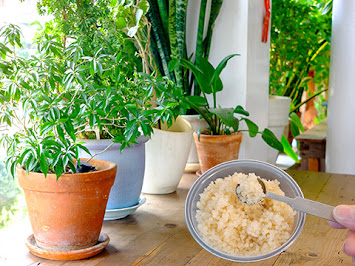 According to Cornell University, SLF have yet to cause significant damage to agricultural crops. The exception to this is grapes, where they have proven to be a serious problem. SLF are swarm feeders, and they can quickly overrun an orchard with hundreds of individuals in multiple life stages on each vine. This will debilitate the vine, weakening it to the point that it produces poor or no blooms and fruit and loses its winter hardiness. These effects, as well as oozing, wilting and defoliation, can occur on any plant that SLF feed on. Plants are often unable to withstand the swarm and simply die.
According to Cornell University, SLF have yet to cause significant damage to agricultural crops. The exception to this is grapes, where they have proven to be a serious problem. SLF are swarm feeders, and they can quickly overrun an orchard with hundreds of individuals in multiple life stages on each vine. This will debilitate the vine, weakening it to the point that it produces poor or no blooms and fruit and loses its winter hardiness. These effects, as well as oozing, wilting and defoliation, can occur on any plant that SLF feed on. Plants are often unable to withstand the swarm and simply die.  |
| Tree of Heaven (Ailanthus altissima) |
Since SLF do not sting or bite, they pose no direct risk to people. However, they do create significant trouble due to the copious amounts of sugary waste (known as honeydew), that they create. Some people report allergic reactions to honeydew, but this is not common. Mostly, it’s an unpleasant nuisance for people. It sticks on outdoor surfaces like porches, cars, benches and on clothing and pets. Honeydew also has an odor like fermentation that is unpleasant to most people but irresistible to many unwanted insects like ants and wasps. Bees are also drawn to it - they like to feed on the honeydew, especially when it is found on a Tree of Heaven (Ailanthus altissima) – the preferred host of SLF and another invasive species. Apparently it creates a uniquely tasty honey for an interesting reason. Read more here.
 |
| SLF adults and damage to tree |
A significant issue with SLF is sooty mold. This fungus uses the honeydew as a grow medium and will quickly spread throughout the affected plant. Sooty mold spores and pieces of mycelia can be easily spread to other plants as well by splashing water or wind. Once there, the mold will exploit any weakness it finds to establish a foothold. More on sooty mold here.
So why is SLF so hard to control? Here are some reasons:
 |
| 4th instar nymphs on wheel |
(2) SLF are extremely mobile. As nymphs and adults, they are impressive jumpers. As adults they will fly short distances. They have been known to travel miles on their own by a combination of jumping, flying and walking. When you add their hitchhiking into the mix, it explains why they are spreading so quickly.
(4) Their egg masses are hidden in plain sight. SLF females lay their eggs on all sorts of outdoor surfaces and items that are left outside (barbecue grills, folding chairs, etc.). She covers her eggs with a substance that’s white at first, but eventually it turns tannish-brown and cracks a bit. They look just like smears of dried mud, unremarkable and unnoticed.
To get a grip on these wily insects, it takes a multi-pronged, diligent effort that addresses each life stage. SLF produce one generation a year, which includes an overwintering egg stage, four nymphal stages (instars) and an adult stage (more here). Egg cases need to be scraped off any surface they are found on and disposed of in such a way that they cannot survive. This can be done by putting them into a plastic bag filled with hand sanitizer or spraying them with suffocant like dormant oil. In the other stages, trunk, branch and foliar sprays will work to some extent but will probably need to be reapplied aggressively. Sticky traps and tree bands will work but must be monitored closely so that they don’t trap birds or other wildlife (more on that here) and that they do not fill up and become a bridge for other SLF. Neem oil, horticultural and dormant oils, insecticidal soaps and pyrethrins can be used as sprays. Fungicides as a pro-active pretreatment are a good idea, especially biologicals like Burkholderia spp. strain A396 and Beauveria bassiana.
Have fun squishing!
Submitted by Pam














